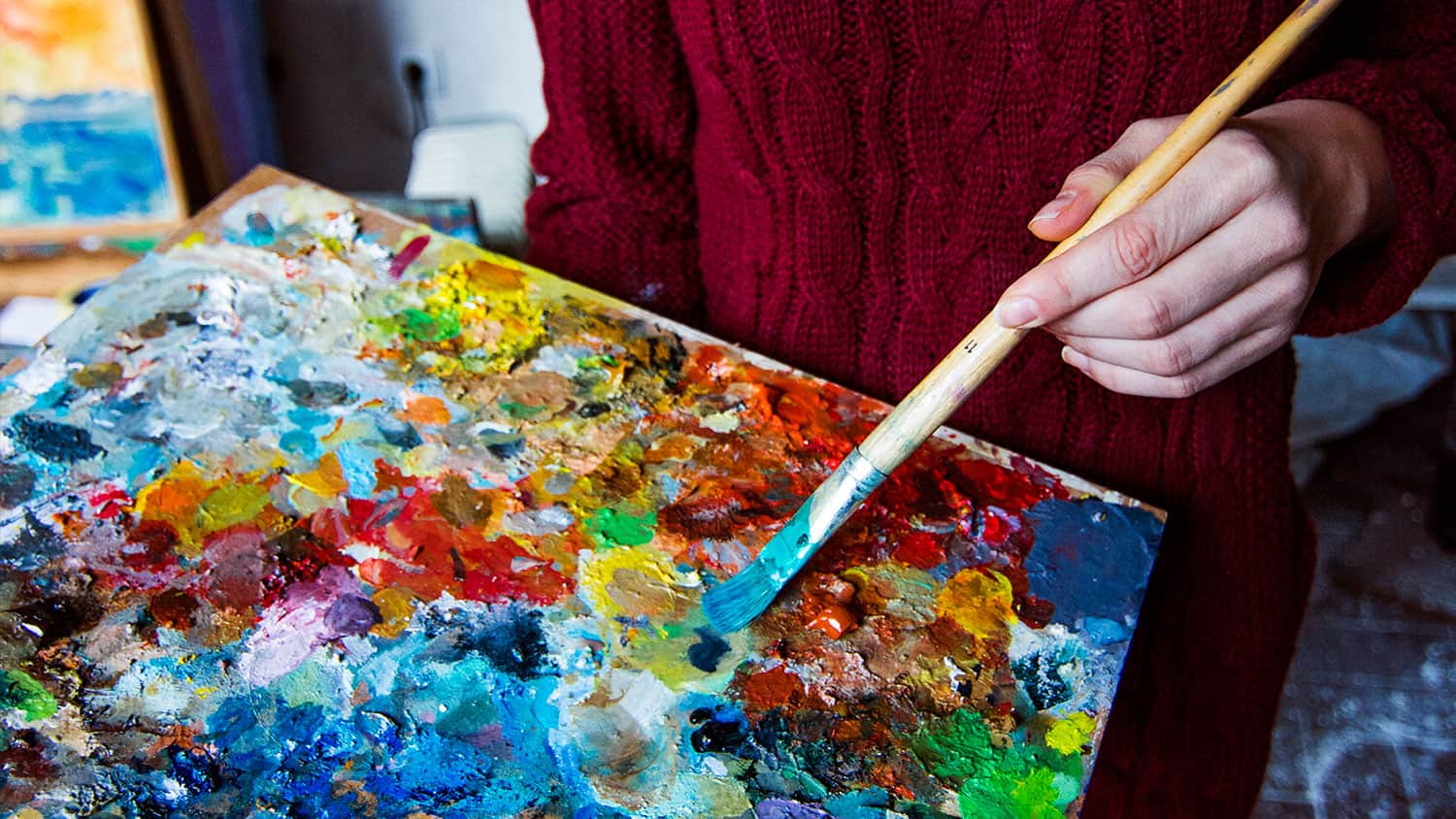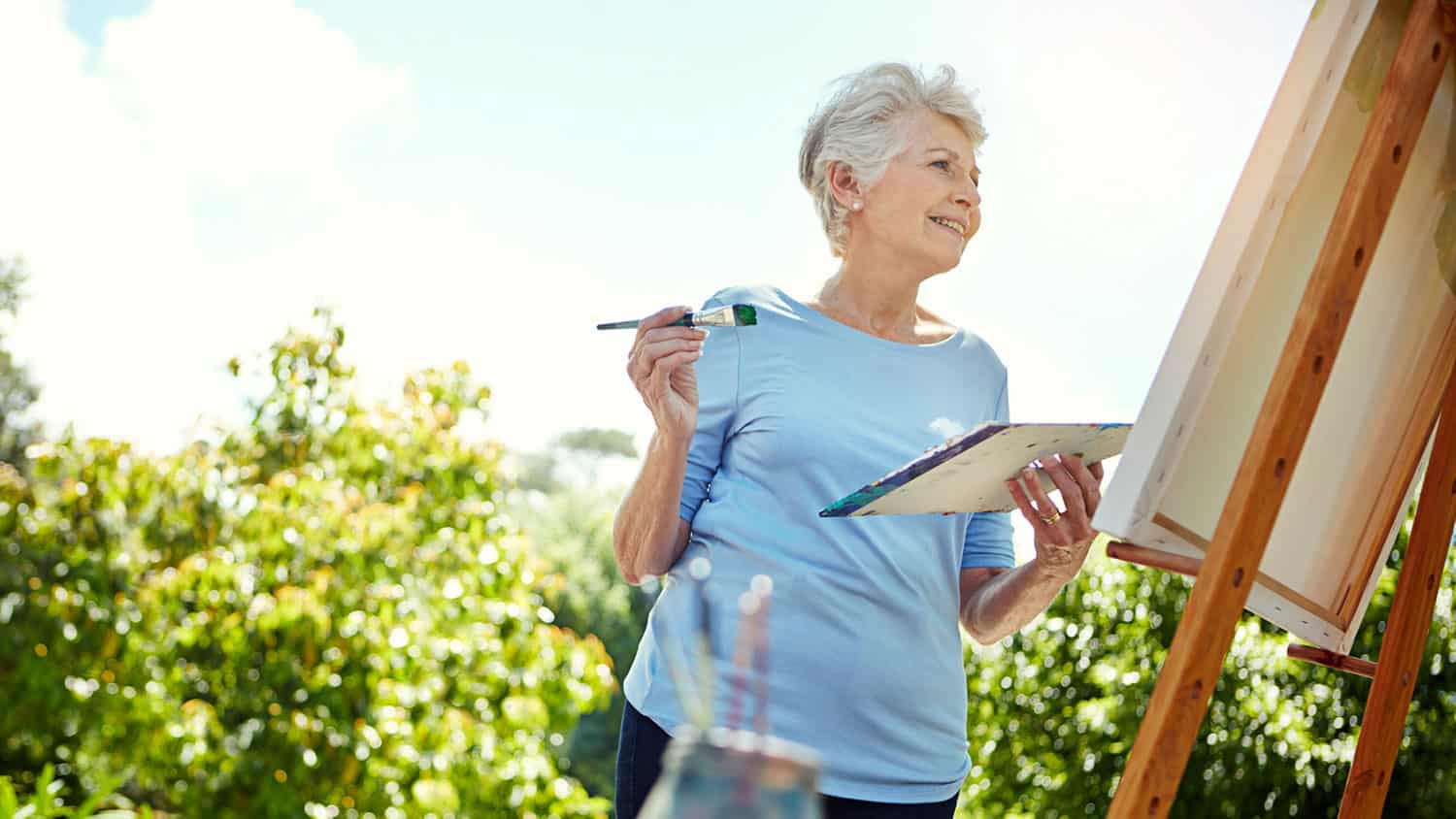
Creative Ways to Enjoy Oil Painting Without Wrecking Your Budget
You love your new oil painting pastime, but replacing art supplies keeps getting more expensive. Maybe you feel a little guilty about the costs. Maybe you decide to paint less often. Another option is to stretch out the paint, but does the end result on the canvas disappoint you?
You are not alone. I have also been through this cycle and it is not fun. Who wants to think about these concerns when all we want is the joy of painting?
True enough, but these costs can mount, spoiling the good cheer. So let us have a look at ways to get excellent results without prompting a call from the bank manager.
DIY for Your Materials
Easels are a potential big cost, but a once off. Still, it is simple to make an easel if you are handy at DIY, or if you have an obliging friend to help. A simple adjustable shelf can hold your canvas too, saving you hundreds of dollars.
All leisure industries these days have fantastic choice. Unfortunately, prices tend to be high-end and then some. Outdoor painting is popular, but the accessories can mount up and dent your budget. The truth is you need little more than a paint box. I made a simple painting box from an existing sketch box. Total costs? Less than 10 dollars. You can see an example here.
Be Creative with Painting Surfaces and Brushes
For painting surfaces, small paintings are the answer to learning how to paint. I am talking about representational painting, not large abstract works of course. How small? The 6” x 8″ or 10” x 12″ sizes are perfect. Instead of expensive canvas try cost effective panels of MDF. Certain suppliers in your town may be able to cut them for you in bulk for another big saving. Panels this size need only be 3mm thick.
If you like, you can paste canvas onto these MDF panels for an ideal painting surface. I prefer to simply prime the panels with acrylic gesso. The hard painting surface is great and paintings on panels sell without any problem. I do use canvas for large paintings, but my bread-and-butter sales are usually the small panels.
Practice on other surfaces too, like matt board offcuts if you can find them. Your local framer may be happy to give them to you. Make sure to prime them of course. Many artists use primed watercolor paper in this way too.
A good quality brush makes a big difference. It is maddening when cheap bristles fall out and you have to pick them off your painting. A good brush will not do this.
Tip: Got a birthday coming up? Drop friendly hints about the brushes you like. Write them down so your friends or family know to get the correct ones.
The main issue is looking after the brushes so that they last. Cleaning them with kerosene, in my opinion, improves your brushes’ lifespan. Buy the long flat variety of brush as it lasts longer too.
Don’t Scrimp: Be Smart with Paint
Using good quality student paint to learn your craft is not a bad thing. Artist quality (professional) paint can bring a tear to the eye when you see the bill. I have tried many brands over the years. I find Maimeri’s Classico range hard to beat for value.
Use all your paint if you can. Save the paint left over on your palette by covering it overnight. For longer periods you can scrape up the paint and save it in small plastic jars. Some artists keep their paint fresh in the fridge.
Another big tip is to buy fewer colors. Too often exotic colors are seldom used. It’s far better to buy the primary colors and white. Teach yourself how to mix color and improve your skills at the same time.
Oil painting is wonderful when you paint in layers. Big juicy paint strokes add the magic to a painting. The trick is to keep your paintings small, but generously layered. Put that small painting in a chunky frame and you have a real show-stopper. Beginners often mistake large paintings as better paintings, but then to save paint the artist skimps on layers and ends up with a starved canvas. Not good.
Educate Yourself Online
There are many wonderful resources at excellent prices online. Of course, there is also YouTube and many other video resources. Once again it is tempting to buy tons of instructional courses and videos. Time spent actually painting is more important, so start with learning the basics well. Practice. The work you do will ultimately save you money as you learn to use your materials effectively.
For pure inspiration it is hard to beat Pinterest. Over time, your tastes will develop and your skills will grow. Your Pinterest boards will show you this when you look back over time and see how you have developed your eye. Another bonus: Pinterest is free.
Paint with Purpose
Far from holding you back, these tips aim to help you paint with purpose. The idea of respect for your materials may seem quaint these days, but it is important for your growth as an artist. Costs should not hold you back from having fun and producing good paintings.
If you’re wondering whether to choose oil or acrylic paint for your art, read OIL OR ACRYLIC PAINT? USE BOTH AND IMPROVE YOUR PAINTING QUICKLY.
Let’s Have a Conversation:
Do you have tips for budget conscious artists? What creative ways have you found to stretch your funds? What suggestions do you have for artists just starting out? Please share them below.
Tags Creativity







A wonderful way to start painting is to choose a Paint by Number kit. They come with a numbered canvas cord instead with the paints and brushes you will need. Some canvases come framed; some even with an easel. Added benefit is the mindfulness practice to create them. Available on specialty online stores. They can fit into your life whenever you have the time or need to clear your mind and focus.
I am now considering painting a picture as a personal gift.
Great article! Very encouraging message to not hold yourself back from beginning or continuing to practice developing your skill at painting as either a rewarding hobby or profession, due to material costs. There is always a way! You can do it!